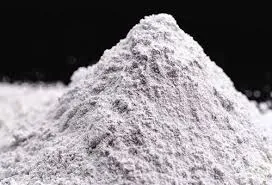
Nov . 03, 2024 16:59 Back to list
hydroxypropyl methyl cellulose msds
Hydroxypropyl Methyl Cellulose (HPMC) Safety Data Sheet An Overview
Hydroxypropyl Methyl Cellulose (HPMC) is a cellulose derivative that finds widespread application in various industries, including pharmaceuticals, food production, and construction. Due to its diverse uses, understanding the safety protocols associated with HPMC is essential. The Safety Data Sheet (SDS) for HPMC provides critical information regarding its properties, handling, storage, and emergency procedures.
Chemical Identification
HPMC is a non-ionic, water-soluble polymer that is derived from cellulose. It is commonly used as a thickening agent, film-forming agent, and texturizer. In the pharmaceutical industry, HPMC serves as a binder in tablet formulations and as a coating agent for controlled-release medications. In food manufacturing, it is utilized for its emulsifying and stabilizing properties.
Hazard Identification
According to the SDS, HPMC is considered to have a low level of hazard. It is not classified as hazardous under the Globally Harmonized System (GHS). However, it may cause mild irritation to the eyes and skin upon prolonged exposure. Inhalation of dust can lead to respiratory tract irritation. Therefore, it is vital to handle HPMC with care, ensuring that appropriate personal protective equipment (PPE) is used during handling.
First Aid Measures
hydroxypropyl methyl cellulose msds

In case of exposure, the SDS outlines specific first aid measures. For eye contact, flush your eyes with plenty of water for at least 15 minutes and seek medical attention if irritation persists. If HPMC comes into contact with skin, wash the affected area with soap and water. Inhalation of dust requires moving to fresh air and seeking medical help if symptoms like coughing or difficulty breathing occur. If ingested, do not induce vomiting; seek medical assistance immediately.
Handling and Storage
To ensure safe handling of HPMC, the SDS recommends using appropriate PPE such as gloves, safety goggles, and masks, especially in industrial settings where dust generation is likely. Store HPMC in a cool, dry place, away from incompatible substances such as strong oxidizers. Containers should be kept tightly closed when not in use to prevent moisture absorption and contamination.
Environmental Considerations
HPMC is biodegradable, and its environmental impact is considered low. However, it is important to avoid discharge into the environment and to dispose of HPMC waste according to local regulations. Being responsible with the disposal of chemical substances contributes to the protection of global ecosystems.
Conclusion
Understanding the safety aspects of Hydroxypropyl Methyl Cellulose is crucial for anyone working with this versatile compound. The Safety Data Sheet provides essential guidance, ensuring safe handling and emergency procedures are in place. By following the recommendations outlined in the SDS, individuals can minimize risks and utilize HPMC effectively across various sectors. Always consult the latest version of the SDS before working with any chemical substance to stay informed of any changes or updates in safety protocols.
-
Versatile Hpmc Uses in Different Industries
NewsJun.19,2025
-
Redispersible Powder's Role in Enhancing Durability of Construction Products
NewsJun.19,2025
-
Hydroxyethyl Cellulose Applications Driving Green Industrial Processes
NewsJun.19,2025
-
Exploring Different Redispersible Polymer Powder
NewsJun.19,2025
-
Choosing the Right Mortar Bonding Agent
NewsJun.19,2025
-
Applications and Significance of China Hpmc in Modern Industries
NewsJun.19,2025







